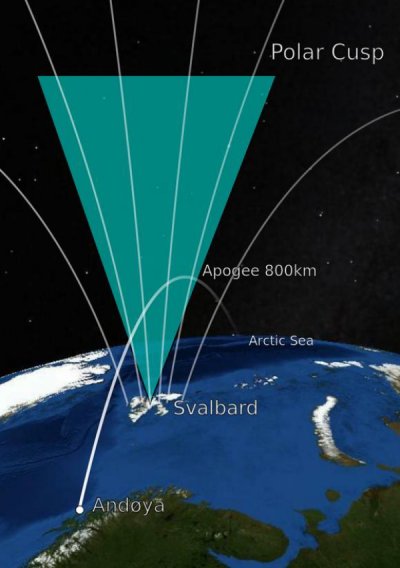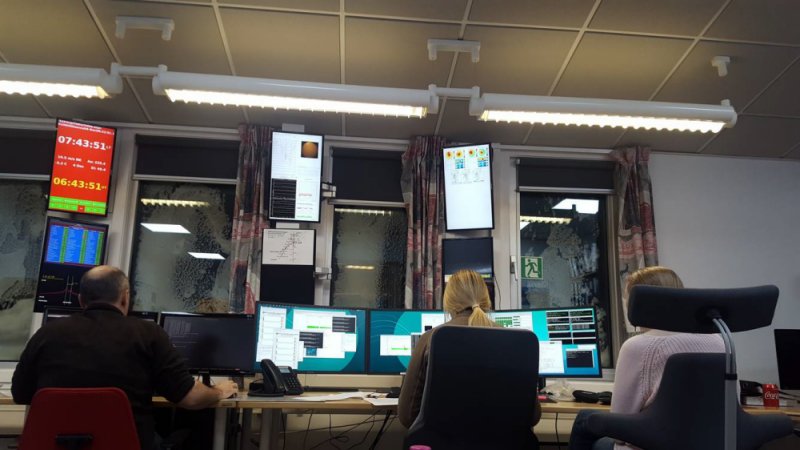
of the Earth's magnetic field.
Space plasma physicists have long known that the “cusp” of the Earth’s magnetic field, a region over Svalbard that is an important site of interaction between the solar wind and the Earth’s upper atmosphere. But no study to date addresses the region of overlap between the cusp and the “Ionospheric Alfvén Resonator” (IAR)—a resonant cavity for low-frequency “Alfvén” waves that extends several hundred kilometers above the Earth. Determining how plasma and electromagnetic waves behave in this region of overlap is the subject of the SIOS-funded “Energy Deposition in the Geomagnetic Cusp Alfvén Resonator” (EDGAR) project.
Through the EDGAR project Dr. Spencer Hatch (University of Bergen) worked with Professor James La-Belle (Dartmouth College) and an international team of scientists to successfully launch Cusp Alfvén and Plasma Dynamics Rocket II (CAPER-2) through the overlapping cusp/IAR region from Andøya, Norway on 4 January, 2019 at 09:28 UTC. CAPER-2 is a part of the wide GCI-CUSP collaboration where the Norwegian participation is funded by INFRANOR.
CAPER-2 instruments made measurements such as plasma temperature and density, as well as electromagnetic field variations, that are critical to understanding the physics of this region. During the CAPER-2 traversal of the overlapping cusp/IAR region, all-sky cameras at the Kjell Henriksen Observatory recorded images of red aurora within the cusp, while the EISCAT Svalbard incoherent scatter radar observed altitude profiles of ionospheric plasma density and temperature.
Measurements from the CAPER-2 campaign will answer questions about the overlapping cusp/IAR region:
- What are the estimated rates of electromagnetic energy deposition within the overlapping dayside IAR/cusp region when calculated (i) using accurate density and temperature profiles, and (ii) with appropriate inclusion of time-dependent effects?
- How do these estimates of electromagnetic energy deposition rates within the overlapping cusp/IAR region compare with estimates of energy deposition within the IAR, which have not taken cusp conditions into consideration?
The EDGAR project is now underway. Stay tuned for results from this study!

09:28 UTC on 4 January, 2019 from Andøya Rocket Range in Andøya, Norway.



























